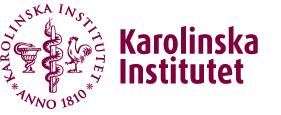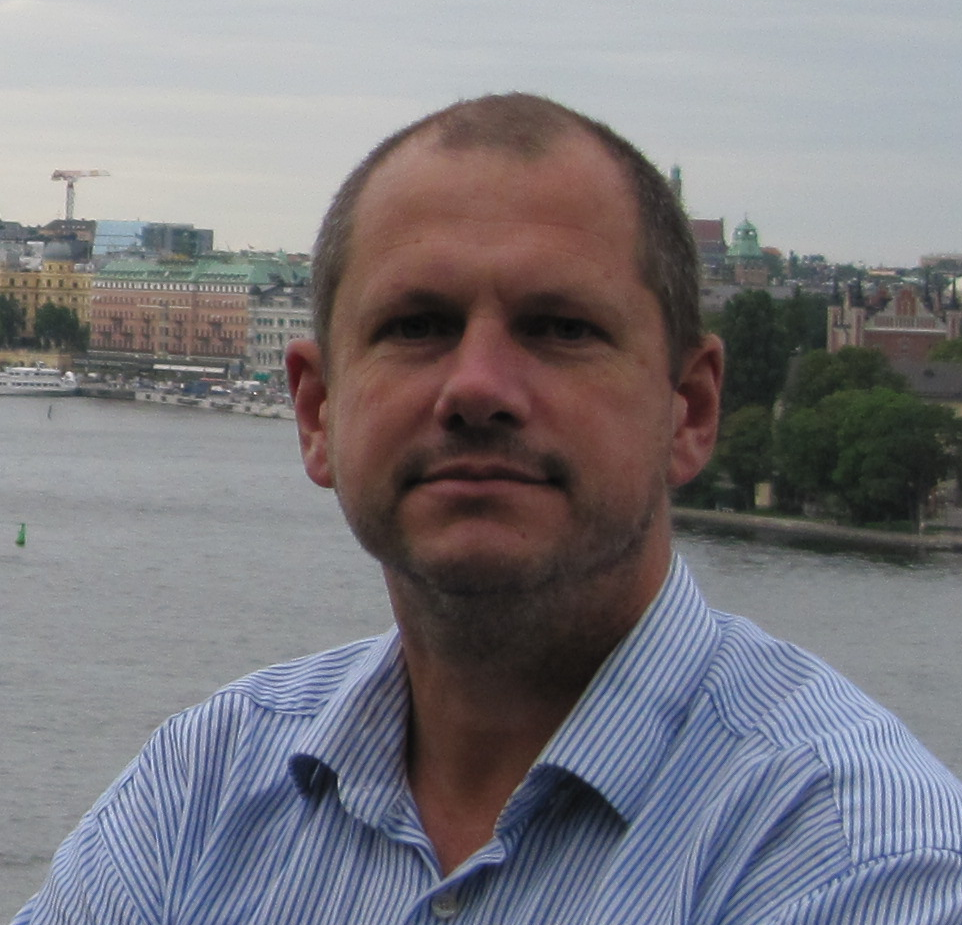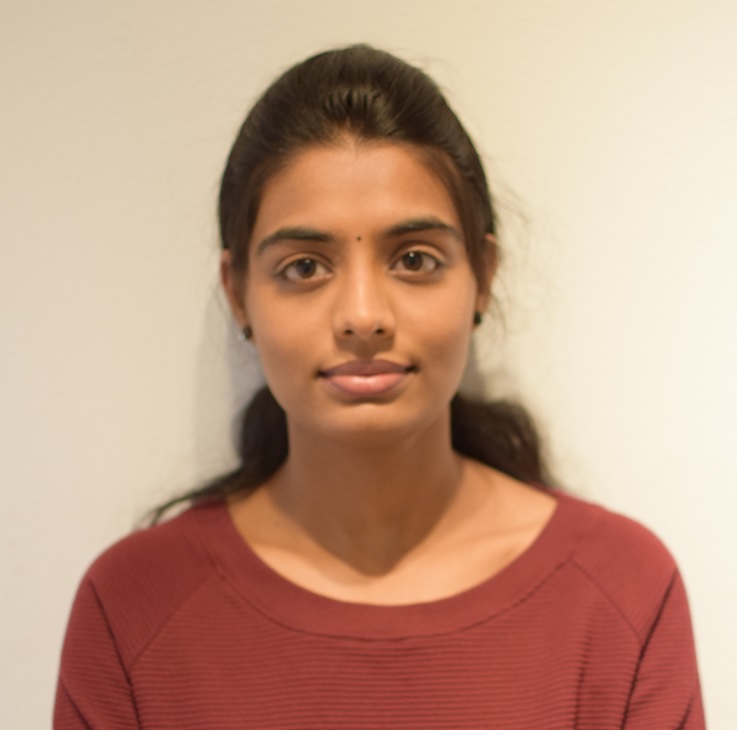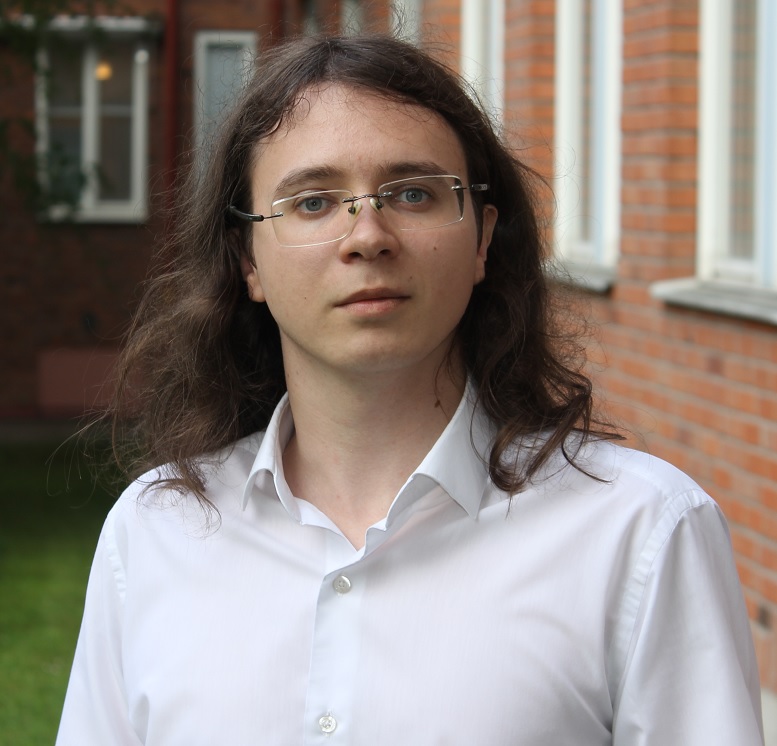


|
 |
Network analysis and systems biologyLearn more about our bioinformatics services |
Our goal is to bridge data generation and biologically adequate functional analysis. For this purpose, we can use the network analysis methodology.
Interactions between genes, proteins, different RNA, and other biological molecules enable existence of all living organisms. Knowing global maps of such interactions, called networks or interactomes, is crucial for understanding life. However, the true biological networks are not directly observable. They are elucidated by combining sophisticated experimental and computational approaches. Our network based approach to functional analysis and biological integration has the following strengths:
We created FunCoup: a statistical framework where these methods were applied to reconstructing global gene networks via systematic integration of heterogeneous public datasets. The algorithms of dynamic sub-network retrieval or multi-species on-line network browser are, to our knowledge, unique features of FunCoup. The current research interests are concentrated on building networks with custom high-throughput data and functional analysis of genes in the network context. In order to enable statistically sound testing of biological hypotheses, we proposed a new method of network enrichment analysis (Alexeyenko et al., 2012) where topology was employed to evaluate functional impact of experimentally determined candidate genes and gene sets. The method extended the gene set enrichment analysis into the network domain, and was applied in a number of collaboration efforts. To answer concrete biological questions, a number of other methods of gene network analysis were developed:
In order to address individual features of patients, we investigate combinations of in vitro drug screening data, high-throughput data, and systems biology profiles with clinical covariates to find informative and prognostic ones for each patient subset. A novel fast algorithm can select most promising patient subsets (partitions), develop and cross-validate predictive signatures and then suggest the latter for deeper studies.
The directions of ongoing work are:
 |
Andrey Alexeyenko
PublOn reviewer record |
 |
Ashwini Jeggari |
 |
Iurii Petrov |
| Dariya Goranskaya | Max Planck Institute for Human Cognitive and Brain Sciences |
| Simon Merid | Institute of Environmental Medicine, Karolinska Institutet |
| Anastasia Piskaeva | |
| Valeria Pestana Gianvittorio | |
| Blanca Ivone Herrera |
Research networks: - ACT, temacentrum "Advanced Cancer Therapies". - PCM, Personalized Cancer Medicine. - KICancer. Collaborative projects: - Micronevironment and fibroblast: roles in cancer (George Klein group, Karolinska Institute); - mRNA targeting with Wig protein (Klas Wiman, Karolinska Institute); - Characterization of cancer attractor states (Ingemar Ernberg, Karolinska Institute); - Role of syndecan-1 in malignant mesothelioma (Katalin Dobra, Karolinska University Hospital); - Analysis of signaling in embryonic patterning (Johan Ericson, Karolinska Institute); - Signatures of toxicity in the zebrafish embryo network (Joel Meyer, Duke University); - Emergence of sex differences in a developing bird interactome (Judith Mank, Oxford University/Hans Ellegren, Uppsala University);
Tomtebodavägen 23A, 17165 Solna
Gamma building, 6th floor

Andrey Alexeyenko, Odd T. Brustugund, Inger J. Z. Eided, Radosveta Genchevab, Zeinab Kosibaty, Yi Laib, Luigi de Petris, Georgios Tsakonasa, Oscar Grundberg, Bo Franzen, Kristina Viktorsson, Rolf Lewensohn, Per Hydbring, and Simon Ekman. (2022) Plasma RNA profiling unveils transcriptional signatures associated with resistance to osimertinib in EGFR T790M positive non-small cell lung cancer patients. Translational Lung Cancer Research , accepted for publication.[DOI]
Mikael Brink, Ewa Berglin, Aladdin J. Mohammad, Anders Lundquist, Inger Gjertsson, Andrey Alexeyenko, Kristina Lejon, Solbritt Rantapää Dahlqvist. (2022) Protein profiling in presymptomatic individuals separates myeloperoxidase–antineutrophil cytoplasmic antibody and proteinase 3-antineutrophil cytoplasmic antibody vasculitides. Arthritis & Rheumatology 2022 Dec 19. doi: 10.1002/art. Online ahead of print. [DOI]
Iurii Petrov and Andrey Alexeyenko. (2022) Individualized discovery of rare cancer drivers in global network context. eLife. May 20, 2022: Vol. 11, e74010. [DOI]
Iurii Petrov and Andrey Alexeyenko. (2022) EviCor: interactive web platform for exploration of molecular features and response to anti-cancer drugs. J Mol Biol. 2022, Jun 15;434(11):167528. [DOI]
Zhanna Alekseenko, José M. Dias, Andrew F. Adler, Mariya Kozhevnikova, Josina A. van Lunteren, Sara Nolbrant, Ashwini Jeggari, Svitlana Vasylovska, Takashi Yoshitake, Jan Kehr, Marie Carlén, Andrey Alexeyenko, Malin Parmar, and Johan Ericson. (2022) Robust derivation of transplantable dopamine neurons from human pluripotent stem cells by timed retinoic acid delivery. Nat Communications, 2022 Jun 1;13(1):3046.[DOI]
Yasmin Yu, Muhammad Zaeem Noman, Santiago Parpal, Simone Kleinendorst, Kristine Saether, Andrey Alexeyenko, Jenny Viklund, Martin Andersson, Jessica Martinsson, Katja Pokrovskaja, Angelo Milito, Bassam Janji. (2022) VPS34 inhibitor SB02024 activates cGAS-STING signaling and sensitizes tumors to STING agonist. Cancer Research, 82. 2116-2116. 10.1158/1538-7445.AM2022-2116.
Domenico Mallardo, Andrey Alexeyenko, Mariaelena Capone, Gabriele Madonna, SuFey Ong, Sarah Warren, Kristina Viktorsson, Bo Franzen, Marilena Tuffanelli, Marcello Curvietto, Vito Vanella, Lucia Festino, Mariagrazia Vitale, Giosue Scognamiglio, Joseph Beechem, Gerardo Botti, Alessandra Cesano, Rolf Lewensohn, Giuseppe V Masucci, Paolo Antonio Ascierto (2022) Toward transcriptomics-based prediction of response to immune checkpoint inhibitor in patients with malignant melanoma J Transl Med. 2020 Feb 11 18(Suppl 1):50.[DOI]
José M. Dias, Zhanna Alekseenko, Ashwini Jeggari, Marcelo Boareto, Mariya Kozhevnikova, Hui Wang, Michael P. Matise, Andrey Alexeyenko, Dagmar Iber, and Johan Ericson. (2020) A Shh/Gli-driven three-node timer motif controls temporal identity and fate of neural stem cells. Science Adv. 16 Sep 2020: Vol.6, no.38, eaba8196 [DOI]
Marcela Franco, Ashwini Jeggari, Sylvain Peuget, Franziska Böttger, Galina Selivanova, and Andrey Alexeyenko (2019) Prediction of response to anti-cancer drugs becomes robust via network integration of molecular data. Sci Rep. , 9, Article number: 2379(2019) [DOI]
Ashwini Jeggari, Zhanna Alekseenko, José Dias, Johan Ericson, and Andrey Alexeyenko (2018) EviNet: a web platform for network enrichment analysis with flexible definition of gene sets. Nucleic Acids Res., 2018 June 9. [DOI].
Bo Franzén, Andrey Alexeyenko, Masood Kamali-Moghaddam, Thomas Hatschek, Lena Kanter, Torbjörn Ramqvist, Jonas Kierkegaard, Giuseppe Masucci, Gert Auer, Ulf Landegren, and Rolf Lewensohn (2018) Protein profiling of fine needle aspirates reveals subtype-associated immune signatures and involvement of chemokines in breast cancer Mol Oncol., 2018 Nov 19. [DOI].
Bo Franzén, Masood Kamali-Moghaddam, Andrey Alexeyenko, Thomas Hatschek, Susanne Becker, Lotta Wik, Jonas Kierkegaard, Annika Eriksson, Naveen Muppani, Gert Auer, Ulf Landergren, and Rolf Lewensohn (2018) A fine needle aspiration based protein signature discriminates benign from malignant breast lesions Mol Oncol., 2018 Sep;12(9):1415-1428. [DOI].
Linnéa La Fleur, Vanessa F. Boura, Andrey Alexeyenko, Anders Berglund, Victor Pontén, Johanna S. M. Mattsson, Dijana Djureinovic, Johan Persson, Hans Brunnström, Johan Isaksson, Eva Brandén, Hirsh Koyi, Patrick Micke, Mikael C. I. Karlsson, and Johan Botling (2018) Expression of scavenger receptor MARCO defines a targetable tumor-associated macrophage subset in non-small cell lung cancer. Int J Cancer 2018 Apr 18. [DOI]
Torbjörn Ramqvist, Anders Näsman, Bo Franzén, Cinzia Bersani, Andrey Alexeyenko, Susanne Becker, Linnea Haeggblom, Aeneas Kolev, Tina Dalianis, and Eva Munck-Wikland (2018) Protein Expression in Tonsillar and Base of Tongue Cancer and in Relation to Human Papillomavirus (HPV) and Clinical Outcome. Int J Mol Sci. 2018 Mar 25;19(4). pii: E978. [DOI]
Ashwini Jeggari, Andrey Alexeyenko (2017) NEArender: an R package for functional interpretation of ‘omics’ data via network enrichment analysis. BMC Bioinformatics, 18(Supplement 5). [DOI]
Stefania Giacomello, Fredrik Salmén, Barbara K. Terebieniec, Sanja Vickovic, José Fernandez Navarro, Andrey Alexeyenko, Johan Reimegård, Lauren S. McKee, Chanaka Mannapperuma, Vincent Bulone, Patrik L. Ståhl, Jens F. Sundström, Nathaniel R. Street and Joakim Lundeberg (2017) Spatially resolved transcriptome profiling in model plant species. Nat. Plants, 3, 17061. [DOI].
Twana Alkasalias, Andrey Alexeyenko, Katharina Hennig, Frida Danielsson, Robert Jan Lebbink, Matthew Fielden, S. Pauliina Turunen, Kaisa Lehti, Vladimir Kashuba, Madapura Harsha, Benedek Bozoky, Emma Lundberg, Martial Balland, Hayrettin Guvén, George Klein, Annica K.B. Gad and Tatiana Pavlova (2017) RhoA knock-out fibroblasts lose tumor inhibitory capacity in vitro and promote tumor growth in vivo. Proceedings of the National Academy of Sciences of the USA, 2017 Feb 21;114(8):E1413-E1421. [DOI].
Erik Hilborn, Olle Stål, Andrey Alexeyenko, Agneta Jansson (2017) The regulation of hydroxysteroid 17beta-dehydrogenase type 1 and 2 gene expression in breast cancer cell lines by estradiol, dihydrotestosterone, microRNAs, and genes related to breast cancer. Oncotarget, [DOI].
Cinzia Bersani, Mikael Huss, Stefania Giacomello, Lidi Xu, Jonas Bianchi, Staffan Eriksson, Fredrik Jerhammar, Andrey Alexeyenko, Anna Vilborg, Joakim Lundeberg, Weng-Onn Lui and Klas G. Wiman (2016) Genome-wide identification of Wig-1 mRNA targets by RIP-Seq analysis. Oncotarget, 2016 Jan 12;7(2):1895-911. [DOI].
Andrey Alexeyenko, Twana Alkasalias, Tatiana Pavlova, Laszlo Szekely, Vladimir Kashuba, Emilie Flaberg, Helene Rundqvist, Peter Wiklund, Lars Egevad, Peter Csermely, Tamas Korcsmaros, Hayrettin Guvén and George Klein Confrontation of fibroblasts with cancer cells in vitro: gene network analysis of transcriptome changes and differential capacity to inhibit tumor growth (2015) Journal of Experimental & Clinical Cancer Research, 34(1):62. doi: 10.1186/s13046-015-0178-x [DOI].
Woojoo Lee, Andrey Alexeyenko, Maria Pernemalm, Justine Guegan, Philippe Dessen, Vladimir Lazar, Janne Lehtiö and Yudi Pawitan (2015) Identifying and assessing interesting subgroups in a heterogeneous population. BioMed Research International 2015:462549 [DOI].
Alexey Dmitriev, Eugenia Rosenberg, George Krasnov, Ganna Gerashchenko, Vasily Gordiyuk, Tatiana Pavlova, Anna Kudryavtseva, Artemy Beniaminov, Anastasia Belova, Yuriy Bondarenko, Rostislav Danilets, Alexander Glukhov, Aleksandr Kondratov, Andrey Alexeyenko, Boris Alekseev, George Klein, Vera Senchenko and Vladimir Kashuba (2015) Identification of novel epigenetic markers of prostate cancer by NotI-microarray analysis. Disease Markers, 2015:241301. [DOI].
Twana Alkasalias, Emilie Flaberg, Vladimir Kashuba, Andrey Alekseenko, Tatiana Pavlova, Andrii Savchenko, Laszlo Szekely, George Klein, Hayrettin Guvén (2014) Inhibition of tumor cell proliferation and motility by fibroblasts is both contact- and soluble factor dependent. Proceedings of the National Academy of Sciences of the USA, 2014 Dec 2; 111(48):17188-93 [DOI].
Simon Kebede Merid, Daria Goranskaya, Andrey Alexeyenko (2014) Distinguishing between driver and passenger mutations in cancer genomes by network enrichment analysis. BMC Bioinformatics, 15:308. [DOI].
Andrey Alexeyenko, Björn Nystedt, Francesco Vezzi, Ellen Sherwood, Rosa Ye, Bjarne Knudsen, Martin Simonsen, Benjamin Turner, Pieter de Jong, Cheng-Cang Wu and Joakim Lundeberg (2014) Efficient de novo assembly of large and complex genomes by massively parallel sequencing of Fosmid pools BMC Genomics, 15:439. [DOI].
Catherine A. Brownstein, ... Anna Wedell, Mikael Huss, Andrey Alexeyenko, Jessica M. Lindvall, Måns Magnusson, Daniel Nilsson, Henrik Stranneheim, Fulya Taylan... Isaac S. Kohane and, David M. Margulies (197 authors in total) (2014) An international effort towards developing standards for best practices in analysis, interpretation and reporting of clinical genome sequencing results: the CLARITY challenge. Genome Biology 25;15(3):R53. [DOI].
Björn Nystedt, Nathaniel R. Street, Anna Wetterbom, Andrea Zuccolo, Yao-Cheng Lin, Douglas G. Scofield, Francesco Vezzi, Nicolas Delhomme, Stefania Giacomello, Andrey Alexeyenko, Riccardo Vicedomini, Kristoffer Sahlin, Ellen Sherwood, Malin Elfstrand, Lydia Gramzow, Kristina Holmberg, Jimmie Hällman, Olivier Keech, Lisa Klasson, MaximKoriabine, Melis Kucukoglu, Max Käller, Johannes Luthman, Fredrik Lysholm, Totte Niittylaä, Åke Olson, Nemanja Rilakovic, Carol Ritland, Josep A. Rossello, Juliana Sena, Thomas Svensson, Carlos Talavera-Lopez, Günter Theißen, Hannele Tuominen, Kevin Vanneste, Zhi-Qiang Wu, Bo Zhang, Philipp Zerbe, Lars Arvestad, Rishikesh Bhalerao, Joerg Bohlmann, Jean Bousquet, Rosario Garcia Gil, Torgeir R. Hvidsten, Pieter de Jong, John MacKay, Michele Morgante, Kermit Ritland, Björn Sundberg, Stacey Lee Thompson, Yves Van de Peer, Björn Andersson, Ove Nilsson, Pär K. Ingvarsson, Joakim Lundeberg and Stefan Jansson (2013) The Norway spruce genome sequence and conifer genome evolution. Nature 3497(7451):579-84. [DOI].
Oliver Frings, Andrey Alexeyenko, Erik L.L. Sonnhammer (2013) MGclus: network clustering employing shared neighbors. Mol. BioSyst. 9(7):1670-5. [DOI]
Ted McCormack, Oliver Frings, Andrey Alexeyenko and Erik L.L. Sonnhammer (2013) Statistical assessment of crosstalk enrichment between gene groups in biological networks PLoS One 8(1):e54945. [DOI].
Oliver Frings, Judith E. Mank, Andrey Alexeyenko and Erik L.L. Sonnhammer (2012) Network analysis of functional genomics data: application to avian sex-biased gene expression. The Scientific World Journal 2012:130491. [DOI].
Tünde Szatmári, Filip Mundt, Ghazal Heidari-Hamedani, Fang Zong, Elena Ferolla, Andrey Alexeyenko, Anders Hjerpe and Katalin Dobra (2012) Novel genes and pathways modulated by Syndecan-1: implications for the proliferation and cell-cycle regulation of malignant mesothelioma cells PLoS One 7(10):e48091. [DOI].
Pelin Akan, Andrey Alexeyenko, Paul Igor Costea, Lilia Hedberg, Beata Werne Solnestam, Sverker Lundin, Jimmie Hällman, Emma Lundberg, Mathias Uhlén and Joakim Lundeberg (2012) Comprehensive analysis of the genome transcriptome and proteome landscapes of three tumor cell lines. Genome Medicine 4(11):86 [DOI].
Andrey Alexeyenko, Woojoo Lee, Maria Pernemalm, Justin Guegan, Philippe Dessen, Vladimir Lazar, Janne Lehtiö and Yudi Pawitan (2012) Network enrichment analysis: extension of gene-set enrichment analysis to gene networks BMC Bioinformatics 2012, 13:226 [DOI].
Andrey Alexeyenko, Thomas Schmitt, Andreas Tjärnberg, Dimitri Guala, Oliver Frings and Erik L.L. Sonnhammer (2012) Comparative interactomics with Funcoup 2.0 Nucleic Acids Research 40:D821-8 [DOI].
Anna Bennet, Chandra A. Reynolds, Ulrika K. Eriksson, Mun-Gwan Hong, Kaj Blennow, Margaret Gatz, Andrey Alexeyenko, Nancy L. Pedersen and Jonathan A. Prince (2011) Genetic association of sequence variants near AGER/NOTCH4 and dementia. J Alzheimers Dis. 2011 Jan 1;24(3):475-84 [DOI].
Mun-Gwan Hong, Andrey Alexeyenko, Jean-Charles Lambert, Philippe Amouyel and Jonathan A. Prince (2010) Genome-wide pathway analysis implicates intracellular transmembrane protein transport in Alzheimer disease. J Hum Genet. 2010 Oct; 55(10):707-9 [DOI].
Andrey Alexeyenko, Deena M. Wassenberg, Edward K. Lobenhofer, Jerry Yen, Erik L.L. Sonnhammer, Elwood Linney and Joel N. Meyer (2010) Dynamic zebrafish interactome reveals transcriptional mechanisms of dioxin toxicity. PLoS One 2010 May 5; 5(5):e10465 [DOI].
Chandra A. Reynolds, Mun-Gwan Hong, Ulrika K. Eriksson, Kaj Blennow, Fredrik Wiklund, Boo Johansson, Bo Malmberg, Stig Berg, Andrey Alexeyenko, Henrik Grönberg, Margaret Gatz, Nancy L. Pedersen and Jonathan A. Prince (2010) Analysis of lipid pathway genes indicates association of sequence variation near SREBF1/TOM1L2/ATPAF2 with dementia risk. Hum Mol Genet. 2010 May 15;19(10):2068-78 [DOI].
Andrey Alexeyenko and Erik L.L. Sonnhammer (2009) Global networks of functional coupling in eukaryotes by comprehensive data integration. Genome Res. 2009 Jun;19(6):1107-16 [DOI].
Rebecca Hunt-Newbury, Ryan Viveiros, Robert Johnsen, Allan Mah, Dina Anastas, Lily Fang, Erin Halfnight, David Lee, John Lin, Adam Lorch, Sheldon McKay, H. Mark Okada, Jie Pan, Ana K. Schulz, Domena Tu, Kim Wong, Z. Zhao, Andrey Alexeyenko, Thomas Burglin, Eric Sonnhammer, Ralf Schnabel, Steven J. Jones, Marco A. Marra, David L. Baillie and Donald G. Moerman (2007) High-throughput in vivo analysis of gene expression in
Rochellys Diaz Heijtz, Andrey Alexeyenko and F. Xavier Castellanos (2007) Calcyon mRNA expression in the frontal-striatal circuitry and its relationship to vesicular processes and ADHD. Behavioral and Brain Functions 2007 Jul 10;3:33 [DOI]
Andrey Alexeyenko, Ivica Tamas, Gang Liu and Erik L.L. Sonnhammer (2006) Automatic clustering of orthologs and inparalogs shared by multiple proteomes. Bioinformatics 2006 Jul 15;22(14):e9-15 [DOI].
Andrey Alexeyenko, Julia Lindberg, Åsa Pérez-Bercoff and Erik L.L. Sonnhammer (2006) Overview and comparison of ortholog databases. Drug Discovery Today: Technologies (REVIEW ARTICLE) 2006, 3, Issue 2: 137-143 [DOI].
Andrey Alexeyenko, A. Harvey Millar, James Whelan and Erik L.L. Sonnhammer (2006) Chromosomal clustering of nuclear genes encoding mitochondrial and chloroplast proteins in Arabidopsis. Trends Genet. 2006 Nov;22(11):589-93 [DOI].